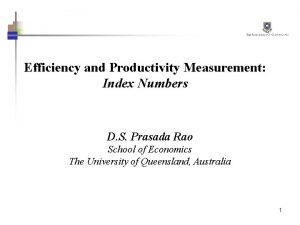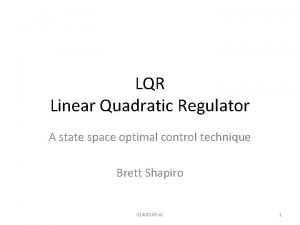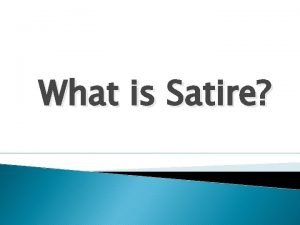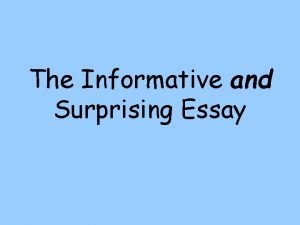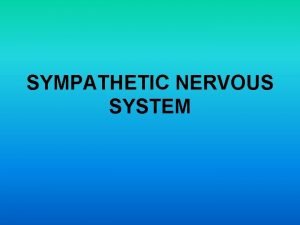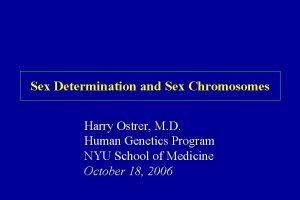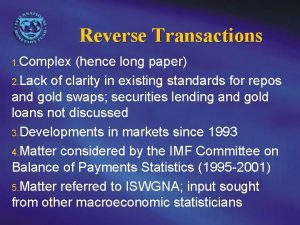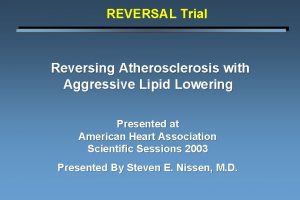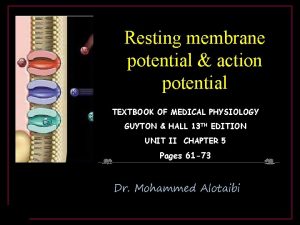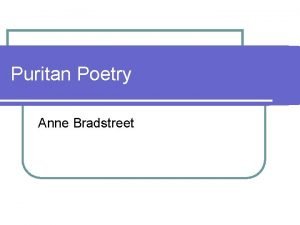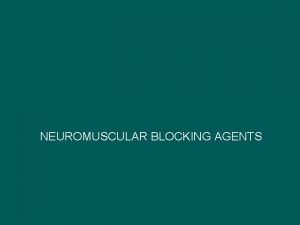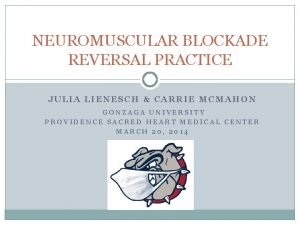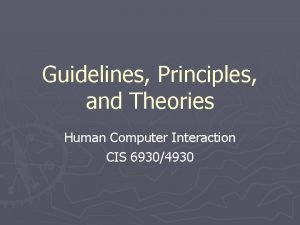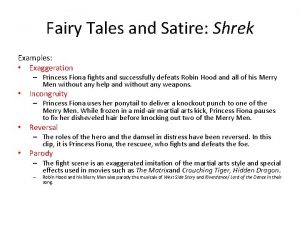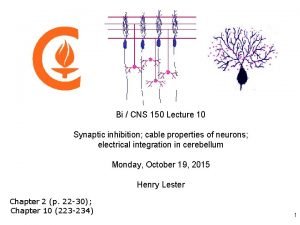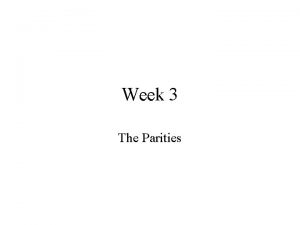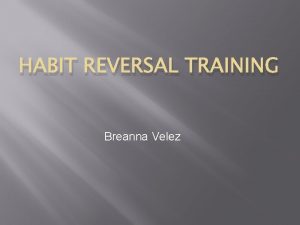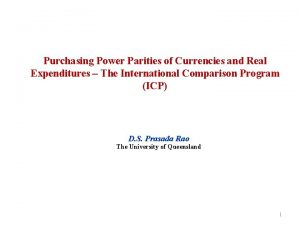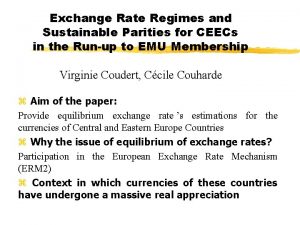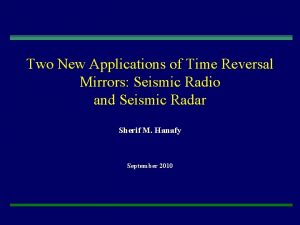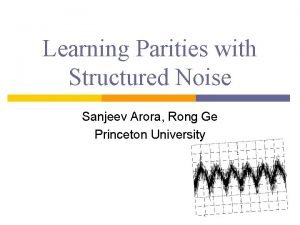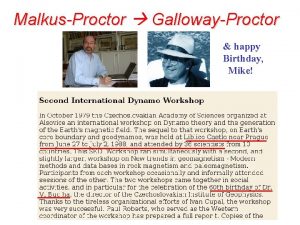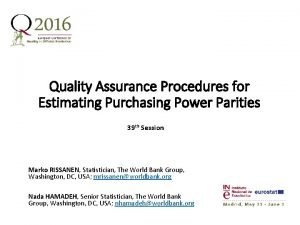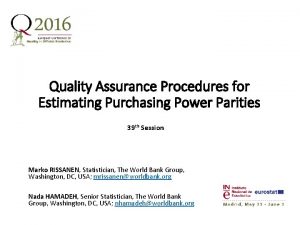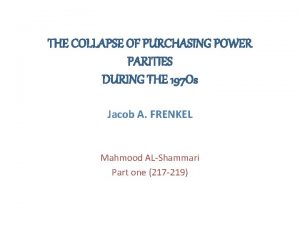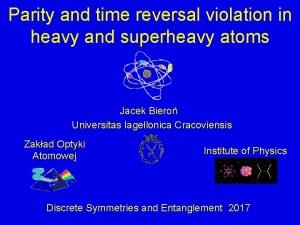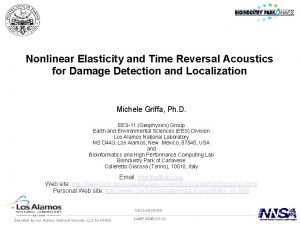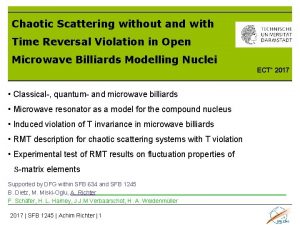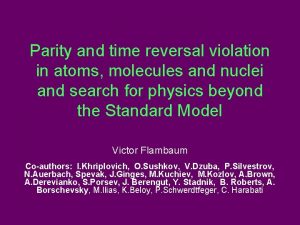New Time Reversal Parities and Optimal Control of




















- Slides: 20

New Time Reversal Parities and Optimal Control of Dielectrics for Free Energy Manipulation Scott Glasgow Brigham Young University, Provo Utah 84602 USA glasgow@math. byu. edu Chris Verhaaren University of Maryland, Department of Physics cver@umd. edu John Corson Brigham Young University, Department of Physics jcorson@byu. edu 1 Frontiers in Optics 2010 /Laser Science XXVI October 24 -28, Rochester New York OSA’s 94 th Annual Meeting

Funding—many thanks! Research facilitated by NSF Grants No. DMS 0453421 and DMS-0755422.

3

Optimal Control of Dielectric Media: Optimally Slow and Fast Light ØNoise reduction ØUltra-high sensitivity interferometry ØUltra-high speed and low power optical switching ØNetwork traffic management ØAll things “all-optical”: buffering, synchronization, memory, signal processing 4

Usual Non-Optimal Approaches to Slow Light—Linear Media Approaches are “frequency local”= narrow band—make index as steep as possible at favorite frequency. 5

Time-Frequency Optimal Approach—Linear Media Approach: Frequency-global/wide-band analysis of , hence of “Orthogonal decomposition of ”! 6

Time-Frequency Optimal Approach=Energy Optimal Approach Slowed Pulse Unaffected Pulse Optimal/Broadband design of Slowing Medium pulse for medium = energyminimal excitation + energy maximal de-excitation of medium 7

Free Energies of Dielectrics: tutorials from viscoelasticity • M. Fabrizio and J. Golden, “Maximum and minimum free energies for a linear viscoelastic material, ” Quart. Appl. Math. 60, 341– 381 (2002). 8

Unified View of Max and Min Free Energies: Time-reversal S. G. , John Corson and Chris Verhaaren “Dispersive dielectrics and time reversal: Free energies, orthogonal spectra, and parity in dissipative media, ” Phys. Rev. E 82, 011115 (2010). 9

Unified View of Max and Min Free Energies: Time-reversal 10

Max and Min Free Energies: “classical” E. E. and V. E. theorems Global/wide-band analysis of : Physical Hypotheses: Ensuing 2 Theorems: 11

Max and Min Free Energies: “classical” E. E. and V. E. theorems Global/wide-band analysis of : Physical Hypotheses: Ensuing 2 Theorems: 12

Max and Min Free Energies: “classical” E. E. and V. E. theorems Global/wide-band analysis of : Physical Hypotheses: Ensuing 2 Theorems: 13

Max and Min Free Energies: “classical” E. E. and V. E. theorems 2 Notions of loss: 3 rd Theorem: 14

Fast/Slow Light Mixture: Analysis by Max and Min Free Energies 15

Time-Reversal and the Effective Susceptibilities: Simplest Examples S. G. , John Corson and Chris Verhaaren “Dispersive dielectrics and time reversal: Free energies, orthogonal spectra, and parity in dissipative media, ” Phys. Rev. E 82, 011115 (2010). 16

Time-Reversal and the Effective Susceptibilities: Simple Example S. G. , John Corson and Chris Verhaaren “Dispersive dielectrics and time reversal: Free energies, orthogonal spectra, and parity in dissipative media, ” Phys. Rev. E 82, 011115 (2010). 17

Time-Reversal and the Effective Susceptibilities: Simple Example The creation energy effective susceptibility is always passive for DC, active near positive resonance. The recoverable energy effective susceptibility is here passive for DC, active “near infinity”. This may be reversed, or it may be passive all frequencies. S. G. , John Corson and Chris Verhaaren “Dispersive dielectrics and timefor reversal: Free energies, orthogonal spectra, and parity in dissipative media, ” Phys. Rev. E 82, 011115 (2010). 18

Time-Reversal and “Eigen-Susceptibilities”: The Fundamental Theorem The Fundamental time-reversal orthogonality theorem: Time reversal eigenvalues and their susceptibilities for the example : S. G. , John Corson and Chris Verhaaren “Dispersive dielectrics and time reversal: Free energies, orthogonal spectra, and parity in dissipative media, ” Phys. Rev. E 82, 011115 (2010). 19

Summary and To Do: Excitation field=time-reversed multiple of energetically optimal de-excitation field implies… 1. multiple is special—time reversal eigenvalues 2. excitation field is itself energetically optimal 3. excitations are complete in state space 4. excitations are orthogonal with respect to the work function 5. two excitations have even and odd parity, i. e. eigenvalues +1 and -1, corresponding to potential and kinetic energy, and other parities exist for, and only for, multi-resonance systems. 6. energetic orthogonality gives rise to “orthogonal decomposition of ” • • • Current eigenvalues are “spatially local”— useful only for “thin media” Compute optimal free space pulse to a) impart energy to “thick” medium most efficiently and then b) extract energy from medium most efficiently—spatio-temporal Carnot cycle Inverse problem: what resonance structure allows the above to occur for a simple, narrow-band pulse? Conjecture: likely significantly different than EIT resonance/dissipation structure. 20
 Paasche index
Paasche index Common z transform pairs
Common z transform pairs Time reversal test formula
Time reversal test formula Inverse z-transform solved examples
Inverse z-transform solved examples Optimal control lqr
Optimal control lqr Elapsed time
Elapsed time Reversal definition satire
Reversal definition satire Surprising reversal essay example
Surprising reversal essay example Vasomotor reversal of dale
Vasomotor reversal of dale Sex reversal
Sex reversal What is reversal transaction
What is reversal transaction Reversal trial
Reversal trial Reversal potential
Reversal potential Example of puritan plain style
Example of puritan plain style Neostigmine atropine reversal
Neostigmine atropine reversal Neostigmine atropine reversal
Neostigmine atropine reversal Hci theories and principles
Hci theories and principles Examples of parody in shrek
Examples of parody in shrek Abab reversal design
Abab reversal design Reversal potential
Reversal potential Usability heuristics checklist
Usability heuristics checklist
